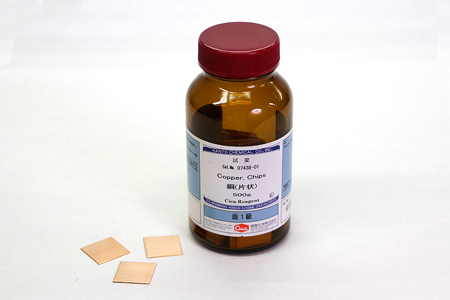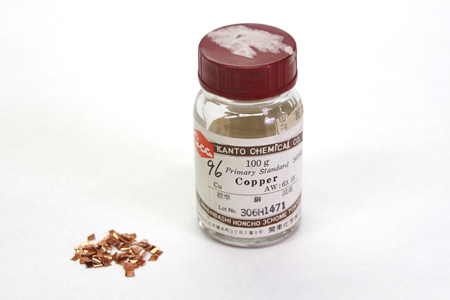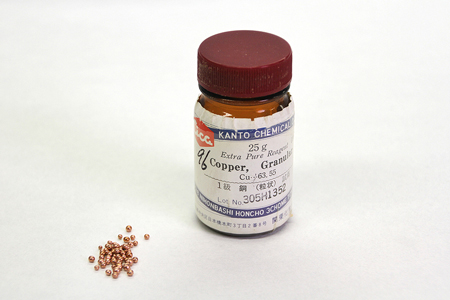⑫ Staining
Bodian staining
Normal neurite and cytoskeleton aggregation (e. g. neurofibrillary tangles) stain reddish purple with silver protein.
This staining technique is simple and achieves stable staining results.
Staining procedure
*:Avoid using metal implements for the silver and gold impregnation processes. Instead, use plastic and glass equipment.
| 1 | Deparaffinization | Xylene | 3 changes, 10 minuntes each |
|---|---|---|---|
| 2 | Removal of xylene | 100% ethanol | 3 changes, 5 minutes each |
| 3 | Hydration | 95%, 70% ethanol | 5 minutes each |
| 4 | Washing | Running tap water | 2 minutes |
| 5 | Rinsing *1 | Distilled water | 3 changes |
| 6 | Silver impregnation *2 | Impregnating solution | Overnight, 37℃ Section color:pale brown |
| 7 | Washing *3 | Distilled water | 3 changes. Agitate sections gently about five times in each bath. Quickly |
| 8 | Reducing *3 | Reducing solution | 10minutes Section color:Yellowish brown |
| 9 | Washing *4 | Running tap water | A few minutes |
| 10 | Rinsing *5 | Distilled water | |
| 11 | Toning *5 | Toning solution | 1 hour Section color:Red brown |
| 12 | Washing *6 | Running tap water | 10minutes Section color:Purple |
| 13 | Reducing *7 | 2% oxalic acid solution | 5 minutes Section color:Dark purple |
| 14 | Washing *8 | Running tap water | A few minutes |
| 15 | Fixing *9 | Fixing solution | 10minutes Section color:Peony |
| 16 | Washing *10 | Running tap water | More than 10minutes |
| 17 | Dehydration | 70%, 95% ethanol | 5 minutes each |
| 18 | Dehydration | 100% ehtanol | 3 changes, 5 minutes each |
| 19 | Clearing | Xylene | 3 changes, 10 minuntes each |
| 20 | Coverslipping |
Work procedure
this is the procedures for staining large sections.
A dish is used for staining large sections; however, a staining jar is used for staining standard-sized sections.
*1 Rinsing
| procedure | |
|---|---|
|
*2 Silver impregnation
| procedure | section colors | |
|---|---|---|
|
Impregnating solution:0.5% silver protein solution
|
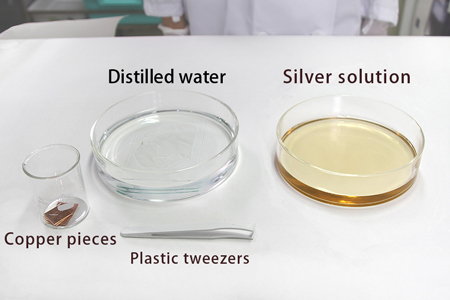 |
|
|
※Place the copper pieces at the edges.
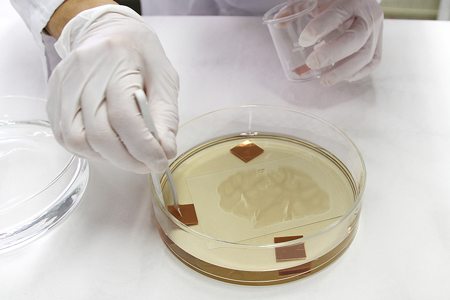 ※When placing copper pieces into a staining jar with small sections, place the copper pieces at the edges or on the bottom.
※When placing copper pieces into a staining jar with small sections, place the copper pieces at the edges or on the bottom.
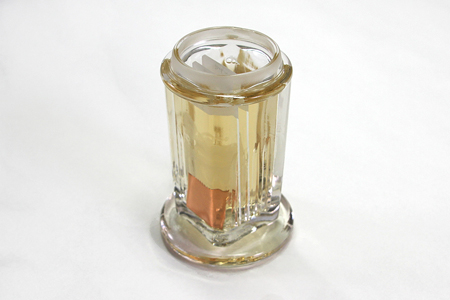
|
After overnight immersion in a silver solution (light brown)
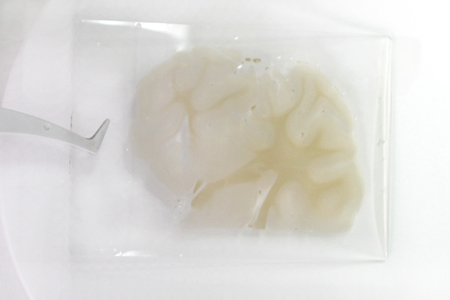
|
*3 Washing & Reducing
| procedure | section colors | |
|---|---|---|
WashingWash in 3 changes of distilled water (bath 1, 2, and 3)
ReducingReducing solution: hydroquinone and anhydrous sodium sulfate solution
|
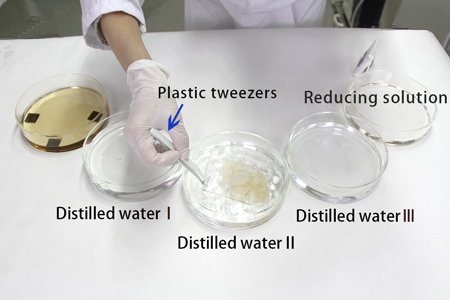 |
Before immersion in reducing solution (light brown)

|
After immersion in reducing solution (ocher)
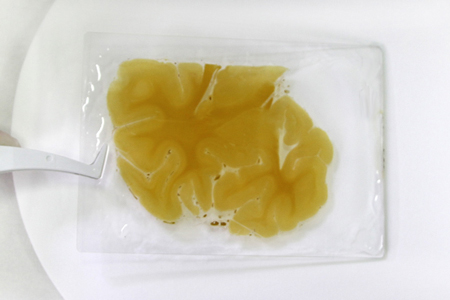
|
||
*4 Washing
| procedure | |
|---|---|
|
tap water
|
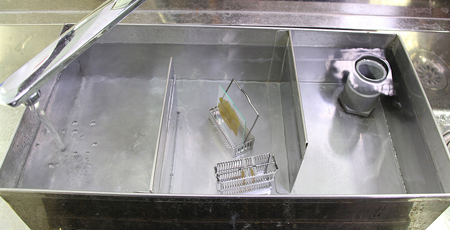
|
*5 Rinsing & Toning
| procedure | section colors | |
|---|---|---|
RinsingWash in 3 changes of distilled water (bath 1, 2, and 3)
ToningToning solution: 1% gold chloride solution
|
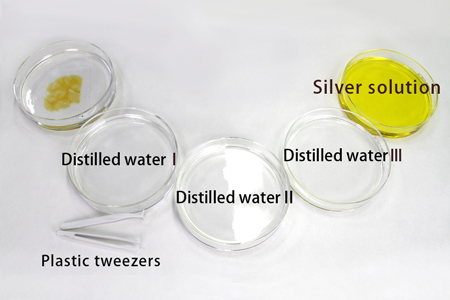
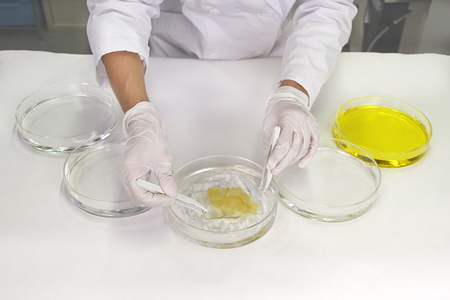
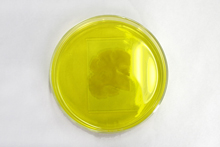
|
Immediately after immersion in gold chloride (whitish)
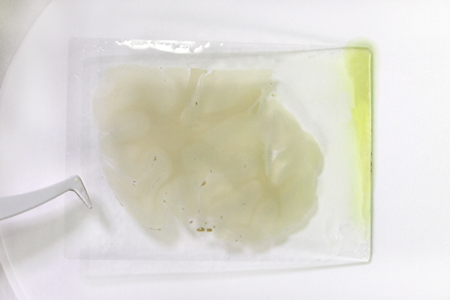 After 30 minutes, the color deepens the longer it is left in solution.
After 30 minutes, the color deepens the longer it is left in solution.
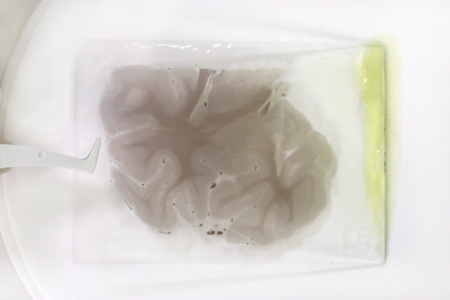 After one hour, the color turns violet.
After one hour, the color turns violet.
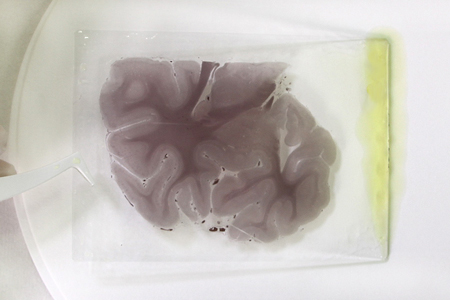
|
*6 Washing
| procedure | |
|---|---|
|
tap water
|
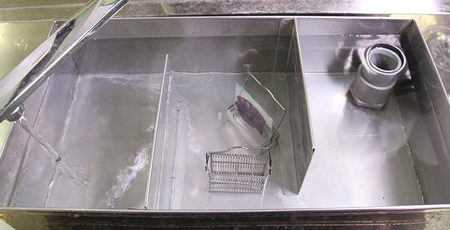
|
*7 Reducing
| procedure | section colors | |
|---|---|---|
|
2% oxalic acid solution
|
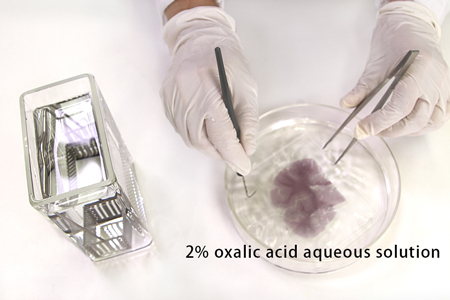
|
Before immersion in 2% oxalic acid
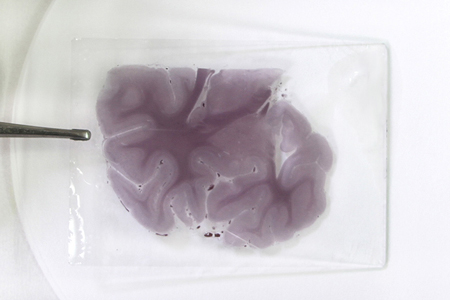 After immersion (deep purple)
After immersion (deep purple)
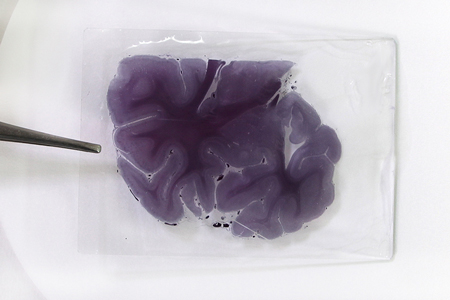
|
*8 Washing
| procedure | |
|---|---|
|
tap water
|
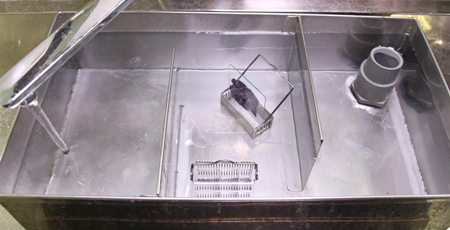
|
*9 Fixing
| procedure | section colors | |
|---|---|---|
|
Fixing:Photographic fixing solution (diluted 10 times) or 5% sodium thiosulfate aqueous solution
|
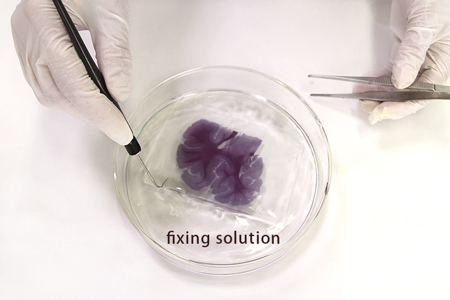
|
Before immersion in fixing solution
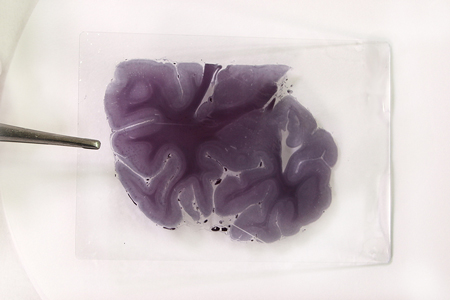 After immersion (peony)
After immersion (peony)
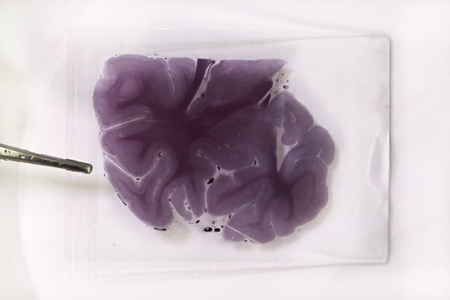
|
*10 Washing
| procedure | ||
|---|---|---|
|
tap water
|
||
Result
Axon in the Internal capsule
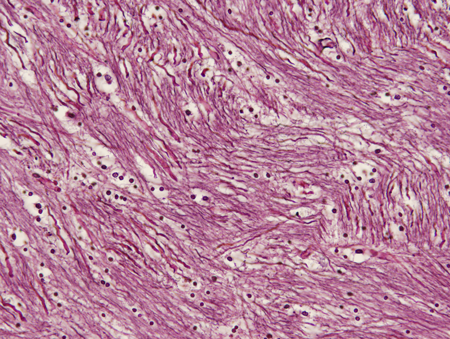
Reagent
- 0.5% silver protein solution
- hydroquinone and anhydrous sodium sulfate solution
- 1% gold chloride solution
- 2% oxalic acid solution
- Fixing:Photographic fixing solution (diluted 10 times) or 5% sodium thiosulfate aqueous solution
① 0.5% silver protein solution
| Silver protein | 0.5g |
| distilled water | 100ml |
| metallic copper | 5g |
|
 (Protargol S is used) |
|---|---|
|
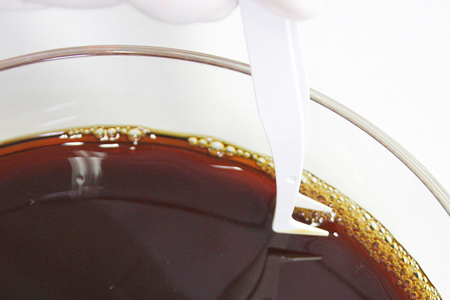 (Protargol S is used) |
|
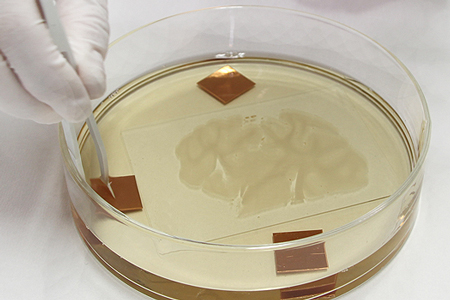 Albumosesilber is used |
Note
- The silver protein aqueous solution concentration is 1% in the original protocol. However, adequate staining results can be obtained with a 0.5%-concentrated silver protein aqueous solution.
- The color tone of the stain differs depending on the silver protein manufacturer and between batches produced by the same manufacturer.
Protargol S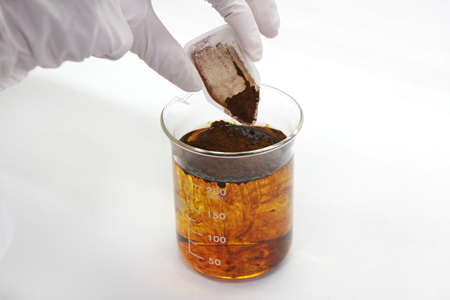 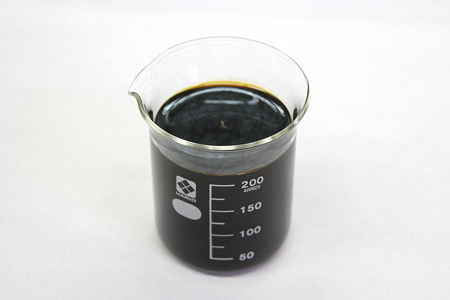 Axon in the Internal capsule, stained with Protargol S. 
|
Albumosesilber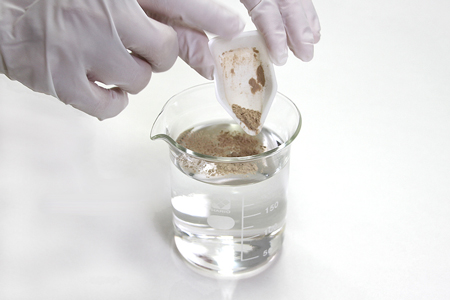 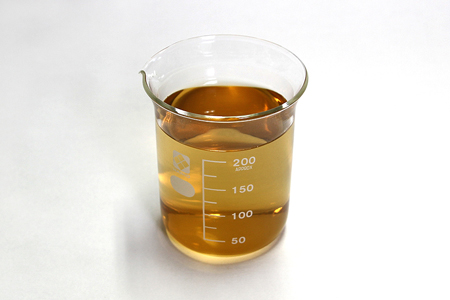 Axon in the Internal capsule, stained with Albumosesilber. 
|
② Hydroquinone and anhydrous sodium sulfate solution
Dissolve hydroquinone in distilled water and then add anhydrous sodium sulfate.
| Hydroquinone | 1g |
| Anhydrous sodium sulfate solution | 4g |
| distilled water | 100ml |
③ 1% gold chloride aqueous solution
This solution can be used repeatedly. Filter the solution after use and store it in a refrigerator.
| Gold(Ⅲ) chloride acid tetrahydrate | 1g |
| distilled water | 100ml |
Useful stock solutions
1% gold chloride solution (store in refrigerator)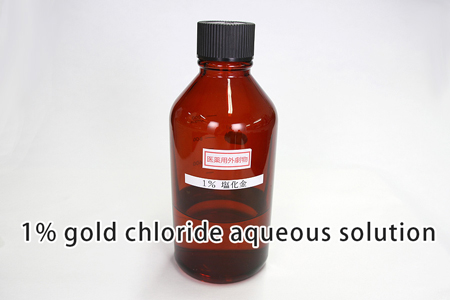 |
2% oxalic acid solution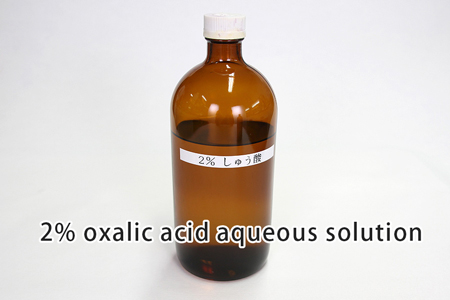 |
Fixing solution 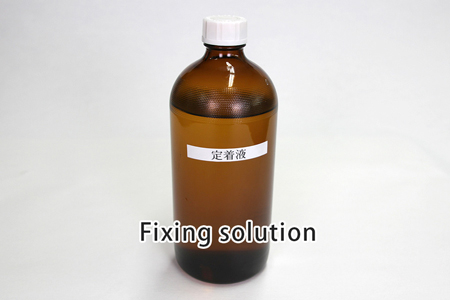 |
Types of silver proteins
This is the silver protein used by the Laboratory of Neuropathology. Use caution because some products do not stain at all depending on the manufacturer. The products listed below are satisfactory for use.
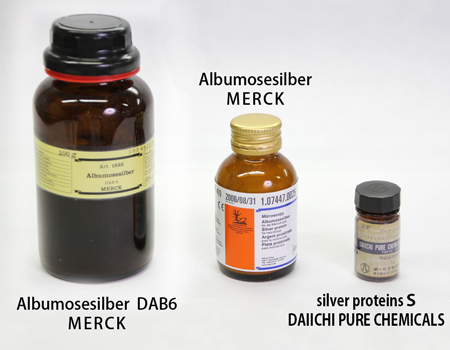
| product name | manufacturer | availability |
|---|---|---|
| Protargol ※ Caution | FUJIFILM Wako Pure Chemical Corporation | Available commercially |
| Albumosesilber | MERCK | out of stock |
| Albumosesilber DAB6 | MERCK | out of stock |
| Protargol S | Daiichi Pharmaceutical Co., Ltd. | out of stock |
※ Caution
The staining methods used for the Fujifilm Wako silver protein differ somewhat to the staining methods we use. Therefore, please refer to the Fujifilm Wako website when using their silver protein products.
Types of copper
The copper used in Bodian staining is not limited to copper pieces, and copper in various configurations can be used. Select a copper configuration that is easy to use. We use copper flakes from Kanto Chemical.

